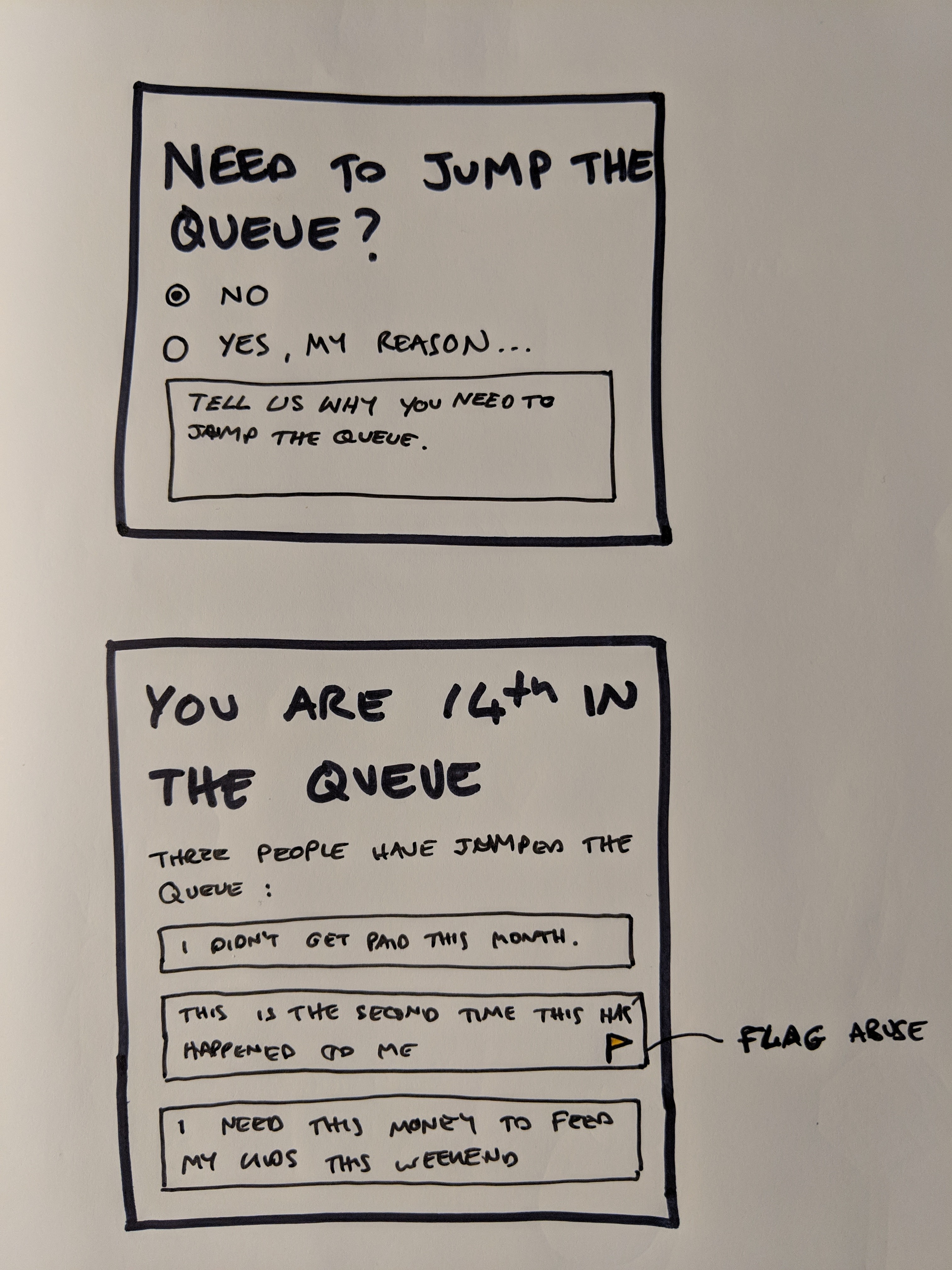Our technology often isolates us. We become a single person, using a disembodied service. Often it’s just me and an app on my smart phone. We lose sight of the humans behind the service. We lose sight of the other customers that the service is having to deal with.
So what? – you might ask. That can be a very good thing.
Of course. But it isn’t always.
‘Stronger together’ means understanding each other’s needs
Imagine a queue of 20 customers who’re all waiting for a £50 refund.
19 of them can happily wait a few days to get that money back. Waiting will not cause them any real trouble or inconvenience.
There’s one person, called Mike, for whom that £50 is the world. Without it, he will not be able to feed his children that weekend.
In a totally anonymous queue, all 20 people would get the same treatment.
But this isn’t right. The (vast vast) majority would be happy for Mike to be served first (because of his need).
Designing a solution for this problem
I can think of two broad options (I guess you could also combine these)
- An expert led service. Create a role on the service side to triage and prioritise customer needs. The NHS works like this. Patients shouldn’t know much about each other. The service makes choices about waiting times based on relative needs.
- A community led service. Allow users to share information about themselves, and to use this to self-organise. Here’s a sketched idea of how a queue-jumping tool might work.

The advantage of this second approach is that we get to understand a little about the needs of those around us and the demands on the service. This adds a little humanity, helps us see the service in a new light and provides a mechanism through which fairer outcomes might happen.
Obviously this sort of thing would need testing and developing as a concept. And there must be countless ways to visualise the other actors in the system (service people, other customers the wider community), in ways that help us to remember that we’re not alone.
